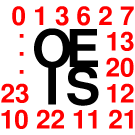I first encountered the term “aikido activism” years ago in a post at tribe.net by one Spidey. Aikido activism is basically the idea that for-profit forms of organization might be better suited to activist goals than non-profit ones. Being, as I am, a knee-jerk (or maybe just a jerk of an) anticapitalist, of course, I thoroughly panned the concept. I was starkly reminded of the aikido activism concept when I encountered the CureTogether Blog. In their “who we are” statement, I found them to be an collaborative, information-sharing platform, which is the type of thing I’m always interested in. One the one hand, CureTogether is non-competitive and “not in it for the money.” On the other hand,
We chose carefully to be a for-profit company because we can do much more good as a business than if we had to constantly ask for donations.
I have made non-profit status part of the very definition of pubwan, my proposed suite of techniques for collaborative data mining of the consumer marketplace. Of course, pubwan as a project has attracted almost no interest and accomplished nothing of importance, and of course I’ve suspected that my resistance to what I perceive to be the tyranny of the business model may be a large part of the reason why. Pubwan supporter Poor Richard informs us:
…However, the simple corporate charter IS the most robust, bulletproof, legal instrument. The 501(c)3 corporation is subject… to many rules and legal challenges. Trusts, co-operatives, and even condo agreements are more specialized and legally assailable on more technical grounds. At the same time, the plain, simple corporation can do anything any of the more specialized forms can do except for tax exemption. Tax exemption you don’t want because it makes you more vulnerable to the state and to your enemies. All you have to do to avoid paying taxes is to break even, which is easy to arrange. The single disadvantage is that charitable donations to your corporation are not tax deductible to the giver.…
and, importantly
Note: the place to embed all your alternative, egalitarian principles and methods is in the corporate bylaws rather than in the charter. This makes them practically invisible to the external legal environment.
Getting back to CureTogether, the business model, as usual rests on the leveraging (though admirably in this case not merchandising) of its aggregate data holdings, constrained by the usual privacy policy boilerplate (emphasis mine):
Your data is your data, totally private for only you to see. Aggregate statistics are made available on our website – for free. Occasionally, we will work with reputable research organizations to get more brilliant minds working on improving everyone’s health, and they sometimes make donations to support our work. In these cases, we may share some of the data we gather, but always take numerous steps to protect our members — both technical (such as removing any potentially identifying data prior to sharing), and legal (requiring researchers to legally bind themselves to not even attempt to personally identify any of our members). Sometimes, we will do custom research studies for companies and get paid for it. In these cases, we never share raw data with them. We only generate reports based on abstracted findings, similar to what we publish openly on our website.
There are important similarities and important differences with the data model proposed for pubwan. I’ve already discussed the most important similarities; namely that it is a collaboration engine and information-sharing platform. The main difference is the first sentence above, and the reason I emphasized it. Pubwan, if implemented, would treat all data (particularly meta data, raw data, aggregate data) as “informational non-property,” which is to say, strictly copyleft. But if it can’t be implemented as a nonprofit, the next question becomes, is there a way to generate exchange value (CureTogether even views donations as “a reflection that we’ve built something useful”) while refusing to use the contents of an informational black box as a strategic asset? This question has important implications for anagorism as well as for pubwan.
For what it’s worth, hat tips are in order: I found the CureTogether Blog via Quantified Self, which it co-sponsors. The phrase “quantified self” I picked up from the KurzweilAI newsletter.

Leave a Reply